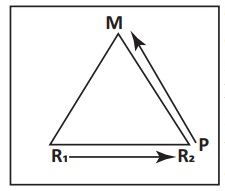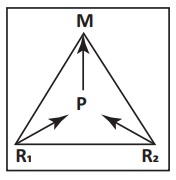Economic Activities - Secondary Activities | 12th Geography : Chapter 4 : Economic Activities
Chapter: 12th Geography : Chapter 4 : Economic Activities
Secondary Activities
Secondary
Activities
Secondary
sector transforms the raw materials obtained from the primary sector into consumer
goods. So it consists of manufacturing and industrial activities. Since it adds
value for the raw materials, it is also called as value addition sector. Industries
consume large quantities of energy and require factories and machinery to convert
the raw materials into goods and products. The secondary sector supports both the
primary and tertiary sectors.
Factors affecting location of Industries
1. Availability of raw-materials or nearness to raw-materials: Availability of raw materials or nearness to raw materials is a primary factor which governs location of industries. An industry is located in a place where raw materials are available in abundance and at cheaper rates. It is more so for the weight loosing and bulky raw materials. For example, oil refinery factories are established at Visakhapatnam because oil is imported through Vizag port.
2.
Availability of power: Availability
of power is another important factor
of concentration or location of industries. In olden days steam was used for running
industries. As a result industry is established near the coal mines. But with the
invention of electricity, today industries are located in any place where electricity
is available. Industries like aluminum units are located near the hydroelectric
projects.
3. TransportcostsTransport costs also influence the location of industries. Industries
incur transport costs for bringing raw-materials and for sending the finished goods
into the markets. It is economical to start an industry near the area where transport
costs are minimum and low. Raw-materials which are heavy and occupy large place,
require huge cost for transporting them. So an industry must be located near the
area where the transport costs are minimal.
4. Nearness to the market: This is a chief factor governing the location of an industry in modern period. Several
advantages are secured when an industry is established near the market.
5. Availability of labour: Labour is required for organizing the productive affairs of
an industry. The entrepreneurs like to start industries in those areas where labour
is abundantly available. For example The growth of cotton textile industry near
Bombay is due to the availability of cheap labour.
6. Government policy: The policy of government also influences the location of industries. The Government
may establish an industry on political considerations by giving several incentives.
It provides finance, land, water, and transport and communication facilities in
backward regions with a view to developing them. It also provides tax concession,
marketing consultancy, export and import facilities.
7. Availability of capital: Capital is the most essential factor for the establishment
of an industry in a locality.
Weber’s Theory of Location
Weber has developed an industrial location
emphasising the least cost principle. This is based on assumptions relating to transport
costs and other conditions. From his theory, industrial locations for three different
situations are made clear.
Assumptions:
1. Some resources
are available only in certain regions. Yet, resources such as water are ubiquitous
(present everywhere).
2. Markets
are found only in specific places.
3. Transport
costs are determined based on the weight of the raw materials and distance of transfer.
4. There
is competition in the markets for the commodities produced at the industry.
5. Humans
use their discretion in their consumer behaviour in relation to the industrial commodities.
Based on these assumptions, together
with the notion of high profits with least costs and imagination, Weber describes
his theory of industrial location.
Weber uses a triangular structure to
elaborate on his theory of industrial location using least transport cost principle.
The two corners of the triangle defined by the base line represent the places where
raw materials are found (R1 and R2). The market (M) is at the apex of the triangle.
In the figure below, R1 and R2 are resource locations, consisting of two types of
resources. M is the market and P is the industrial location.
As the logic behind Weber’s location
indicates, some industries produce finished products which lose weight (weight losing
raw materials). In this case, the transport cost for raw materials transfer to the
industrial location is higher than the transport cost of moving finished products
from industrial location to market. It is because the waste from raw materials at
the industrial site will be high. Hence, it is profitable to have industry at the
raw materials’ locations.

If industry is located at the raw material source R1, then raw material R2 must be transported to industrial location R1 and the finished products must be transported to the market M. This results in transport costs. Likewise the industry could be located at R2, too. But if it is located at M, R1 and R2 resources must be transported to market M. This would also involve transport costs. If on the other hand, the industry is located half way between R1 and R2, and then the transport cost to bring the raw materials from R1 and R2 is equal. Transport cost involved in transporting the finished products to the Market decreases because of small distance to market M (if transport cost is assumed to increase with distance).


In the final analysis, the transport
cost for raw materials to the industrial location P and the finished products to
market M from P together is the least when industry is located at P. There is thus
a chance for increased profit for the industry.

The triangle at top left represents a location where distance to be covered by transport is at minimum, the triangle at the top right illustrates the location of a ‘weight – losing industry’ and the triangle at the bottom left represents the location of a ‘weight – gaining industry’. Hence, the location of industry at P is an ‘optimal industrial location’.

As the industry is located at a point
between the raw materials locations, transport cost to transfer bulky raw materials
is reduced considerably. The transport cost for transferring the finished products
from the industry to the market is also small. In such a context, Weber believes
that it is profitable to set up the industry at a location in between the industry.
There are some industries which manufacture finished products gaining weight in the process. The transport cost between raw materials location and industry is lower than the transport cost of finished products from industrial location to the market. It is logical therefore to locate the industry at the market. According to Weber, this location is more profitable to the industry than any other. The Weber’s location theory is that it is based on the transport cost. Nevertheless, this theoryof industrial location is considered superior to other industrial location theories for its logical conclusion.
Classification of Industries

On the Basis of Labour
Large
Scale Industries
Industries which employ a large number
of labourers with huge capital are called large-scale industries. Cotton and jute
textile industries are large scale industries.
Small
Scale Industries
Industries which employ a small number
of labourers with small investments are called small scale industries. They include
nut & bolt making, coir making, plastic bags industries, dying industry, match
box making, weaving industry are some examples for small scale industries
Cottage
Industries
Those industries whose labour force consists
of family units or individuals working at home with their own equipments are called
cottage industries. It is a small and often informally organized industry. The industries
like weaving and pottery are the examples this category. On the Basis of size of
raw-Material and Finished Goods
Heavy
Industries
Industries which use heavy and bulky
raw-materials and produce products of the same category are called heavy industries.
Iron and steel industry presents a good example of heavy industries.
Light
Industries
The light industries use light raw-materials
and produce light finished products. Electric fans, sewing machines are light industries.
On the basis of Ownership
Private Sector Industries
Industries owned by individuals or firms
such as Bajaj Auto or TISCO situated at Jamshedpur are called private sector industries.
Public Sector Industries
Industries owned by the state and its
agencies like Bharat Heavy Electricals Ltd., or Bhilai Steel Plant or Durgapur Steel
Plant are public sector industries.
Joint Sector Industries
Industries owned jointly by the private
firms and the state or its agencies such as Gujarat Alkalies Ltd., or Oil India
Ltd. fall in the group of joint sector industries.
Co-operative Sector Industries
Industries owned and run co-operatively
by a group of people who are generally producers of raw materials of the given industry
such as a sugar mill owned and run by farmers are called co-operative sector industries.
On the Basis of Source of Raw Materials
Agro Based Industries
Agro based industries are those industries
which obtain raw-material from agriculture. Cotton textile, jute textile, sugar
and vegetable oil are representative industries of agro-based group of industries.
Mineral Based Industries
The industries that receive raw materials
primarily from minerals such as iron and steel, aluminium and cement industries
fall in this category.
Pastoral-Based Industries
These industries depend upon animals
for their raw material. Hides, skins, bones, horns, shoes, dairy, etc. are some
of the pastoral-based industries.
Forest Based Industries
Paper card-board, lac, rayon, resin,
tanning of leather, leave- utensils, basket industries are included in this type
of industries.
Classification based on Nature of products
Based on the nature of products it is
classified into basic industries and consumer goods. Basic industries are manufacturing
goods by using them as raw materials are basic industries. For example Iron and
steel machines for textile industry. Consumer industries are producing goods for
consumers. For example, Television, soap, biscuits, etc
Related Topics